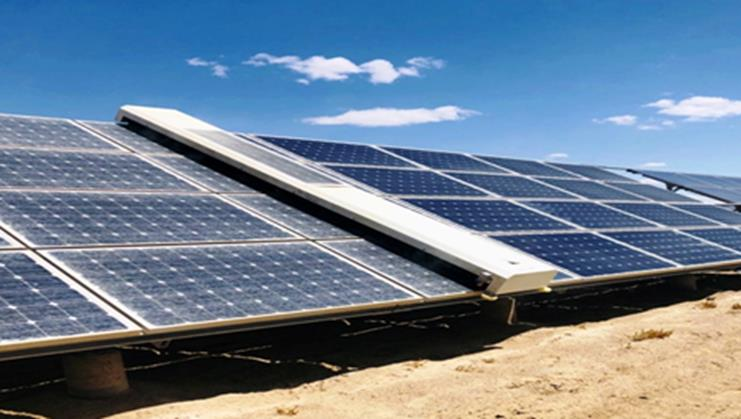As the UK’s adoption of solar energy systems continues to grow, solar panel cleaning robots have emerged as an innovative solution to address maintenance challenges. These intelligent devices combine advanced robotics with photovoltaic technology to optimize energy output while minimizing operational risks and environmental impact.

Core Advantages Driving Adoption:
1. Performance Enhancement
- Achieves 98-99% dust removal efficiency through adjustable high-speed brushes (60-120 RPM).
- Increases power generation by 10-65% through consistent daily cleaning.
- Self-cleaning mechanism maintains brush effectiveness over a lifespan of 15+ years.
2. Cost Efficiency
- Reduces 1MW plant cleaning costs from £8,999.1 – £72,992.8 (manual) to £1,100 – £2,200 initial investment.
- Eliminates water costs and component damage from manual washing.
- IP65 protection ensures operation in the UK’s variable weather (-30℃ to 70℃).

3. Safety & Compliance
- Removes fall risks from rooftop maintenance (accounts for 37% of UK construction fatalities).
- 22° slope adaptability suits complex roof architectures.
- Anti-slip vacuum cups prevent panel surface damage.
4. Smart Management
- 4G-enabled remote control via mobile app.
- Automatic scheduling based on weather data analytics.
- Real-time fault diagnostics with cloud-based technical support.
Technical Specifications for UK Solar Panel Cleaning Robot Conditions:
| Feature | Specification |
|---|---|
| Cleaning Speed | 1000 m²/hour |
| Brush Material | Non-abrasive PA610 nylon |
| Obstacle Clearance | ≤22° inclines |
| Battery Life | 8 hours continuous operation |
| Data Recording | Work logs, fault histories, efficiency reports |
Environmental Benefits:
- Zero-water operation aligns with UK Environment Agency’s water conservation guidelines.
- 55W low-power consumption equivalent to 1 LED streetlight.
- Prevents 12-18kg CO²/MWh losses from dirty panels.
After-Sales Support:
- Local technical teams across major UK cities.
- Lifetime software upgrades with GDPR-compliant data management.
- Customizable cleaning programs for commercial vs. residential installations.
United Kingdom Solar Panel Cleaning Robot Implementation Case:
A Cornwall solar farm reported a 23% energy output increase after replacing bi-monthly manual cleaning with three autonomous units. The system paid for itself in 14 months through improved efficiency and eliminated safety training requirements.
Conclusion
As the UK works toward its 2035 net-zero target, these robotic solutions address both economic and ecological priorities. With 4G connectivity covering 98% of the UK land area and decreasing hardware costs (22% price drop since 2022), automated cleaning represents the next evolutionary step in sustainable energy maintenance.